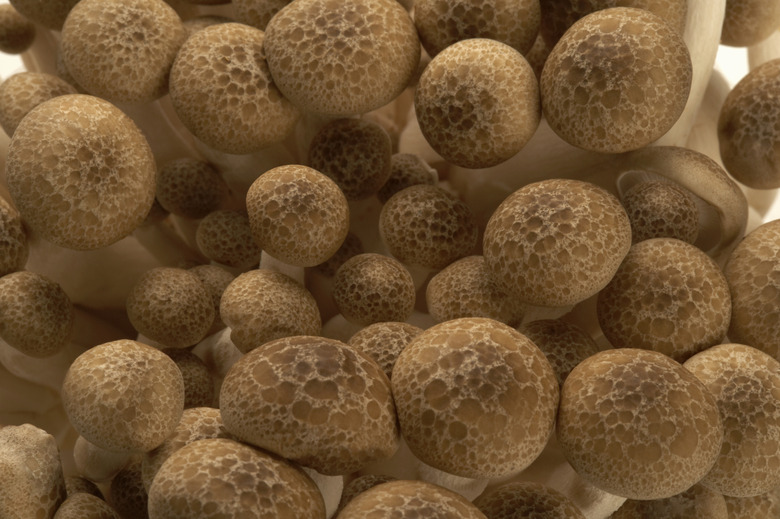How To Make A Homemade Mushroom Growing Box
Things Needed
- Rubber gloves
- Roll of plastic sheeting
- Scissors
- Box tape
- Plastic storage container, 20-qt. size
- Thermometer
- Organic compost
- Mushroom spawn
- Hand-held shovel
- Hydrogen peroxide
- Sphagnum moss
Tip
If you don't have access to a soil test kit, check out your local university extension office. Some offices will test your soil for you. If you can wait a year before planting your garden, grow a cover crop, such as alfalfa, in the garden plot. At the end of the growing season, you till the cover directly into the soil. This is known as green manure, and it provides many nutrients naturally that will allow you to build your garden.
Mushrooms go through three states to become the fungi you enjoy in various dishes. The first stage is the spawning stage, the second stage is the vegetative growth state and the third is the fruiting stage. The production of spawn is difficult and best left to professional mushroom growers. Obtain your spawn from them after you've prepared your own mushroom growing box at home and seasoned the compost properly. If you do things right, in about eight weeks, you should see a crop of mushrooms in the final fruiting stage.
Step 1
Put on a pair of rubber gloves before you begin. You want a mushroom-growing environment that is as sterile as possible to keep bacteria and pests from making their homes in your mushroom growing box.
Step 2
Cut a piece from a roll of plastic sheeting to fit inside a 20-qt. plastic storage container. Pull the plastic tight inside the container, cover the sides and secure the plastic over the rim of the container with box tape.
Step 3
Fill the container 2/3 full with organic compost. Measure the temperature of the compost. The temperature of the compost needs to be below 86 degree F to add the spawn.
Step 4
Add the mushroom spawn and combine it evenly with the compost using your hands. If you decide to use a small shovel to add the spawn, you must sterilize the instrument first with hydrogen peroxide.
Step 5
Place the container in a dark and moderately warm place where you can monitor the temperature and humidity level. Indirect light on the mushroom box is alright.
Step 6
Check the box often for three to four days for mycelia growth. You will see a fibrous substance that is either gray or white making its way through the top of the compost. Wait about 10 days to allow the spawn to go through all of the compost before you apply the casing, or sphagnum moss.
Step 7
Remove the sphagnum moss from its sterile packaging and moisten it with water. Cover the mycelia an even layer, 8 or 9 inches thick, with the sphagnum moss. This casing encourages the mycelia, or vegetative state, to convert to the fruiting state.
Step 8
If you smell ammonia in the compost, do not add the mushroom spawn, as the mushrooms are not likely to grow in this medium. When ammonia is present, the compost is not complete. After you harvest the first growth of mushrooms, additional crops will grow for up to a month.
